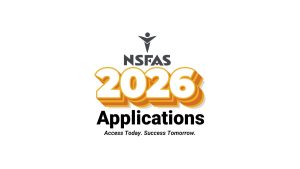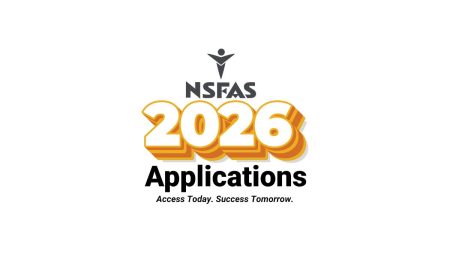Each month, thousands of students depend on their NSFAS Allowances for their livelihoods. As September 2024 unfolds, students across South Africa eagerly anticipate their monthly NSFAS allowance payments. These payments play a crucial role in ensuring that students can focus on their studies without the burden of financial stress.
Whether it’s for textbooks, accommodation, or daily living expenses, the NSFAS allowance is a lifeline for many.
How NSFAS Allowance Payments Work
NSFAS allowance payments are typically disbursed on a monthly basis. The amount of the allowance depends on various factors, such as the type of accommodation (on-campus or off-campus), the student’s field of study, and other personal circumstances. The payments are intended to cover:
- Accommodation Costs: For students who live in university or college residences, NSFAS covers the cost of accommodation. For those living off-campus, a set amount is provided to cover rent.
- Transport: NSFAS provides a transport allowance for students who commute to their institutions.
- Meals: Students receive an allowance for meals, ensuring that they have access to proper nutrition while studying.
- Books and Learning Materials: A portion of the NSFAS allowance is designated for purchasing textbooks and other learning materials.
These allowances are critical for students as they help to reduce the financial burden associated with pursuing higher education.
September NSFAS Allowance Payments: What to Expect
As the new month approaches, students can expect their NSFAS allowance payments to be processed and disbursed. While the payment schedule can vary slightly depending on the institution and other factors, NSFAS generally ensures that students receive their allowances by the first week of each month.
Payment Dates
NSFAS typically disburses payments around the first week of the month. However, the exact date can vary due to factors such as weekends, public holidays, or administrative processes within individual institutions. It’s important for students to regularly check their bank accounts and institutional portals for updates on payment dates.
Payment Methods
NSFAS allowance payments are usually made through direct deposits into students’ bank accounts. Some students may also receive their allowances through institution-specific payment systems, such as student cards or vouchers, depending on the arrangements made by their university or TVET college.
Checking Your Payment Status
To check the status of your NSFAS allowance payment for September, students can log into their myNSFAS account or the student portal of their respective institutions. It’s crucial to keep an eye on your account to ensure that your payments are made on time. If there is any delay or issue, it’s best to contact the NSFAS office or your institution’s financial aid office as soon as possible.
Related: NSFAS Streamlines Student Allowance Payments by Cutting Out Middleman
Common Issues and How to Resolve Them
While NSFAS strives to ensure timely and accurate payments, there can be occasional issues that delay the disbursement of allowances. Here are some common problems students might face and how to address them:
1. Delayed Payments
Sometimes, payments might be delayed due to administrative errors, banking issues, or delays in processing by the institution. If you notice that your payment is late, the first step is to check your myNSFAS account for any updates. If there are no updates or explanations for the delay, you should contact your institution’s financial aid office or NSFAS directly.
2. Incorrect Payment Amounts
In some cases, students might receive less than what they are entitled to. This can happen due to miscalculations or errors in processing. If you receive an incorrect amount, you should immediately report the issue to NSFAS or your institution’s financial aid office to rectify the situation.
3. Banking Issues
It’s important to ensure that your banking details are up-to-date in the NSFAS system. If your bank details are incorrect or outdated, your payment could be delayed or sent to the wrong account. Always double-check your banking information and update it as needed through your myNSFAS account.
4. Changes in Circumstances
If your personal or academic circumstances have changed (e.g., you’ve moved to a new accommodation or changed courses), it’s important to notify NSFAS and your institution immediately. Changes in circumstances can affect the amount of your allowance, so it’s crucial to keep all your information current.
Tip: What to Do When Your NSFAS Bank Verification Fails
Tips for Managing Your NSFAS Allowance
Once your NSFAS allowance is paid out, it’s important to manage it wisely to ensure it lasts throughout the month. Here are some tips to help you make the most of your allowance:
1. Budget Wisely
Creating a budget is one of the best ways to manage your allowance. Start by listing all your necessary expenses, such as rent, transport, food, and learning materials. Allocate a portion of your allowance to each category and try to stick to your budget throughout the month.
2. Prioritize Essential Expenses
While it might be tempting to spend your allowance on non-essential items, it’s important to prioritize essential expenses first. Ensure that your rent, transport, and food are covered before spending on entertainment or other non-essentials.
3. Save Where Possible
If you can, try to set aside a small portion of your allowance for emergencies or unexpected expenses. Even saving a little bit each month can help you avoid financial stress later on.
4. Seek Financial Advice
Many institutions offer financial counseling services for students. If you’re struggling to manage your allowance or have questions about your finances, don’t hesitate to seek advice from your institution’s financial aid office or student services.
Frequently Asked Questions (FAQs)
Q: When will the NSFAS allowance payments for September be made?
A: NSFAS allowance payments are typically disbursed during the first week of each month. However, the exact date may vary depending on your institution’s processing times, weekends, and public holidays. It’s advisable to regularly check your bank account and institutional portal for updates.
Q: How can I check the status of my NSFAS allowance payment?
A: You can check the status of your NSFAS allowance payment by logging into your myNSFAS account or through your institution’s student portal. These platforms usually provide up-to-date information on the payment schedule and any potential delays.
Q: What should I do if I haven’t received my NSFAS payment for September?
A: If you haven’t received your NSFAS payment by the expected date, first check your myNSFAS account for any updates or notifications. If there is no explanation for the delay, contact your institution’s financial aid office or NSFAS directly to inquire about the issue.
Q: Can I update my banking details for NSFAS payments?
A: Yes, you can update your banking details through your myNSFAS account. It’s important to ensure that your bank information is accurate and up-to-date to avoid any delays or issues with receiving your payments.
Q: What happens if my circumstances change, such as moving to new accommodation?
A: If your circumstances change, such as moving to a new residence or changing your course, you should notify NSFAS and your institution as soon as possible. Changes in your circumstances can affect the amount of your allowance, so it’s crucial to keep your information current.
Q: What should I do if the amount I received is incorrect?
A: If you believe the amount of your NSFAS allowance is incorrect, report the issue immediately to NSFAS or your institution’s financial aid office. They will be able to review your payment and make any necessary adjustments.
Q: Are NSFAS payments affected by academic performance?
A: Yes, continued funding from NSFAS is contingent upon satisfactory academic performance. Students are required to pass a certain percentage of their modules or courses to continue receiving financial support. It’s important to stay informed about the academic requirements associated with your NSFAS funding.
Q: How should I manage my NSFAS allowance to make it last throughout the month?
A: To manage your NSFAS allowance effectively, create a budget that prioritizes essential expenses such as rent, food, and transport. Avoid spending on non-essential items until your primary needs are covered. If possible, save a portion of your allowance for emergencies or unexpected expenses.
Q: Can I appeal if my NSFAS application was declined?
A: Yes, if your NSFAS application was declined, you have the option to appeal the decision. The appeal process typically involves submitting additional information or documentation to support your case. Check the NSFAS website or contact their support services for detailed instructions on how to lodge an appeal.
Q: What happens if I withdraw from my course or institution?
A: If you withdraw from your course or institution, your NSFAS funding may be affected. It’s important to notify NSFAS and your institution immediately if you plan to withdraw, as this could impact your financial aid status and future eligibility for funding.
NSFAS allowance payments are a lifeline for many students, helping them cover the essential costs of higher education. As September approaches, it’s important to be aware of when and how your allowance will be paid, and to be prepared for any potential issues that might arise. By managing your allowance wisely, you can ensure that you have the financial stability you need to focus on your studies and achieve your academic goals.
If you encounter any problems with your NSFAS payments or need assistance, remember that support is available through NSFAS and your institution’s financial aid office. Stay informed, stay proactive, and make the most of the financial support available to you.










